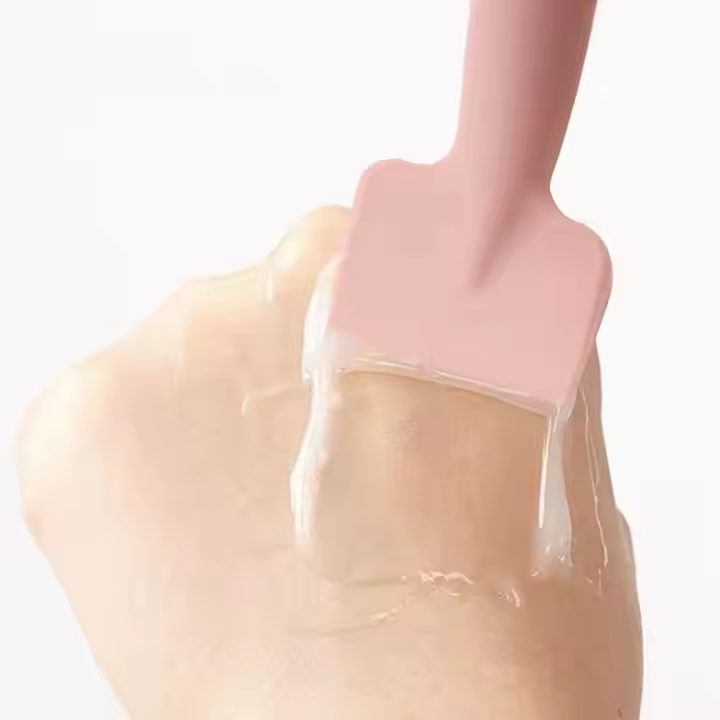Silicone in Beauty Tools: Why Silicone Facial Brushes Are a Hot Item
Silicone has become an increasingly popular material in the beauty industry, particularly in the development of facial cleansing tools. Silicone facial brushes have gained immense popularity due to their numerous benefits and unique properties. In this article, we will explore the reasons behind the success of silicone facial brushes and delve into the broader applications of silicone in beauty tools.
The Rise of Silicone Facial Brushes
Silicone facial brushes have taken the beauty world by storm for several reasons:
- Gentle exfoliation: Silicone bristles are softer and more gentle on the skin compared to traditional nylon brushes. They effectively remove dirt, oil, and makeup without causing irritation or micro-tears.
- Hygienic: Silicone is non-porous and resistant to bacteria growth, making it easier to clean and maintain. Unlike natural bristles, silicone does not harbor bacteria that can lead to skin infections.
- Durability: Silicone is a durable material that can withstand frequent use and exposure to water without losing its shape or effectiveness.
- Versatility: Silicone facial brushes come in various designs and sizes to cater to different skin types and cleansing needs. They can be used with a variety of cleansers and skincare products.
Benefits of Silicone in Beauty Tools
Silicone’s unique properties make it an ideal material for a wide range of beauty tools:
- Soft and flexible: Silicone’s flexibility allows for gentle massaging and contouring of the face, improving blood circulation and promoting product absorption.
- Non-reactive: Silicone is hypoallergenic and non-irritating, making it suitable for sensitive skin.
- Water-resistant: Silicone is completely waterproof, making it easy to clean and use in the shower.
- Temperature-resistant: Silicone can withstand both hot and cold temperatures, making it suitable for use with hot or cold therapy.
Other Silicone Beauty Tools
Beyond facial brushes, silicone is used in a variety of other beauty tools, including:
- Facial rollers: Silicone facial rollers offer a gentle and soothing massage, reducing puffiness and promoting lymphatic drainage.
- Makeup sponges: Silicone makeup sponges provide a flawless and airbrushed finish without absorbing too much product.
- Hair accessories: Silicone hair ties and scrunchies are gentle on hair and prevent breakage.
- Nail tools: Silicone nail tools are used for cuticle care and nail shaping.
Silicone vs. Traditional Facial Brushes: A Comparison
Silicone and traditional facial brushes have both gained popularity in skincare routines. Each type offers distinct benefits, making it essential to understand their differences to choose the best option for your skin.
Silicone Facial Brushes
Silicone facial brushes are made from a synthetic material that is gentle, durable, and hypoallergenic. They have become a favorite among many due to the following advantages:
- Gentle exfoliation: Silicone bristles are softer than traditional bristles, reducing the risk of irritation and micro-tears. They effectively remove dirt, oil, and makeup without causing damage to the skin.
- Hygienic: Silicone is non-porous, making it less susceptible to bacteria growth compared to natural bristle brushes. This helps prevent skin infections and breakouts.
- Durability: Silicone brushes are long-lasting and can withstand frequent use and exposure to water without losing their shape or effectiveness.
- Versatility: Silicone brushes come in various designs and sizes to suit different skin types and cleansing needs. They can be used with a variety of cleansers and skincare products.
Traditional Facial Brushes
Traditional facial brushes are typically made from natural materials like boar bristles or horsehair. They have been used for centuries and offer their own set of benefits:
- Exfoliation: Traditional bristles can provide a deeper exfoliation than silicone brushes, helping to remove dead skin cells and improve skin texture.
- Softness: Natural bristles can be soft and gentle on the skin, especially when properly cared for.
- Natural materials: Some people prefer the natural feel and texture of traditional bristle brushes.
Key Differences
| Feature | Silicone Brushes | Traditional Brushes |
|---|---|---|
| Material | Synthetic (silicone) | Natural (boar bristles, horsehair) |
| Exfoliation | Gentle | Deeper |
| Hygiene | More hygienic | Less hygienic |
| Durability | More durable | Less durable |
| Versatility | More versatile | Less versatile |
Choosing the Right Brush
The best brush for you depends on your skin type, preferences, and desired results:
- Sensitive skin: Opt for a silicone brush for its gentle exfoliation and hypoallergenic properties.
- Oily or acne-prone skin: A silicone brush can help remove excess oil and dirt without irritating the skin.
- Normal or combination skin: Either type of brush can work well, but consider your personal preferences.
- Dry skin: A traditional brush with soft bristles can provide a gentle exfoliation without stripping the skin of moisture.
Ultimately, the best way to determine which brush is right for you is to try both and see what works best for your skin.


